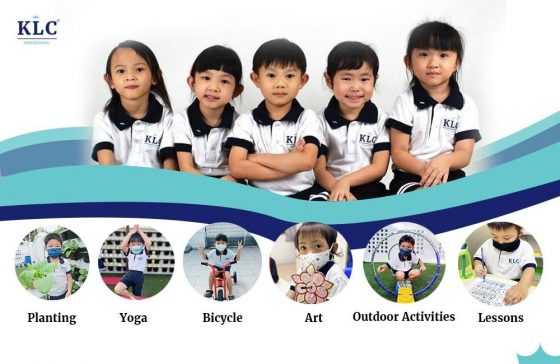Benefits of using sign language to teach children
by on 02/08/2025 ...

It may be a common misconception for us to think of sign language as a tool only for children who have speech or hearing impairments. However, according to experts, the use of sign language can be beneficial even for those without special needs, especially for developing children in the early years. Now, the practice of teaching hearing children sign language is gaining popularity worldwide, and KLC Preschool is within the first cohort of local preschools to have paired their lessons with sign language for all of its students (ages 18 months onwards).
Fun Fact
The American Sign Language (ASL) is now classified as a world language, the same as French, Italian or any other foreign language. Therefore, if a child can sign, the child is considered bilingual.
“At KLC Preschool, we include sign language in everyday activities. One of the fun and engaging ways to teach sign language is to incorporate the sign into songs. By introducing the same sign, it helps children to have a better understanding and be able to change from one language to another in an easier way. For example, the sign for “chicken”, “ayam” and “鸡” is the same. Besides that, teaching children to sign feelings and greetings, like “Thanks”, “Hello”, “Bye” and “I’m sorry”, is also a good start because these happen frequently. Additionally, we teach our students alphabet signing and fingerspelling to help them better remember the letter and sounds,” Ms Jacelyn, principal of KLC Preschool, Johor explains to us how sign language is used in their classrooms.


Today, when more and more children with a variety of learning challenges are being mainstreamed into general classrooms, teachers are finding it increasingly difficult to engage all learners. Incorporating some sort of signing into the learning process might be the solution. As noted by Ms Jacelyn, “Learning sign language is a multisensorial experience, which includes tactile, visual and auditory learning, i.e. it will accommodate a wide range of learning styles. Teachers also use signs as one of their classroom management tools. Because signing involves physical movement, it’s an effective way to keep children focused and paying attention at all times.”
“Moreover, many studies have shown that sign language speeds up speech development, reduces frustration and enables children to communicate effectively. It also improves children’s social skills by increasing their confidence and self-esteem,” adds Ms Jacelyn.

Read on to find out more about how exposing students to sign language early on can benefit their growth and development.
Improved literacy
Teaching children to sign can help them better recognise and write their alphabets because most letters in sign language resemble their written counterparts. “Through the practice of sign language, children develop better fine motor agility for pencil gripping, and this paves the way for writing at a later stage,” concurs Ms Jacelyn. The improved letter recognition can also improve their reading and comprehension skills.
Improves communication skills
Because sign language requires children to use multiple senses, it can strengthen their vocabulary retention, while also making it easier for them to understand spoken words, sentence structure, as well as form longer sentences at a much earlier age.
Boosts higher IQ
A study found that 3-year-old signers were talking like 4-year-olds, and that 8-year-old signers scored an average of 12 points higher in IQ tests than non-signers. The awards and accolades received by KLC students (who were taught to sign since they were 18 months old) time and again for their outstanding achievements in primary school is a testament to the value of exposing children to sign language at an early age.

Reduces tantrums and frustration
Need new tactics for dealing with tantrums in the classroom? Look no further. When children can communicate their needs or what they are thinking through sign language, it will largely lower their frustration levels, which also means less tantrums and more positive connections with the students you teach.
Enhances cognitive skills
Learning sign language stimulates children’s brain, gives it a good workout similar to learning other foreign languages, and in turn will enhance their cognitive skills. It will also develop their creative thinking, problem solving, spatial awareness, mental rotation skills and more. And just like learning how to ride a bicycle, they will never forget, and these skills will stick with them.
Promotes social awareness
It helps children understand what it’s like for those who are deaf or speech impaired, and advance awareness of what people which such disabilities can do with the use of sign language – in fact, we have much more in common than we have differences. And creates more empathy within our own communities.
Contact: Benefits of using sign language to teach children


























